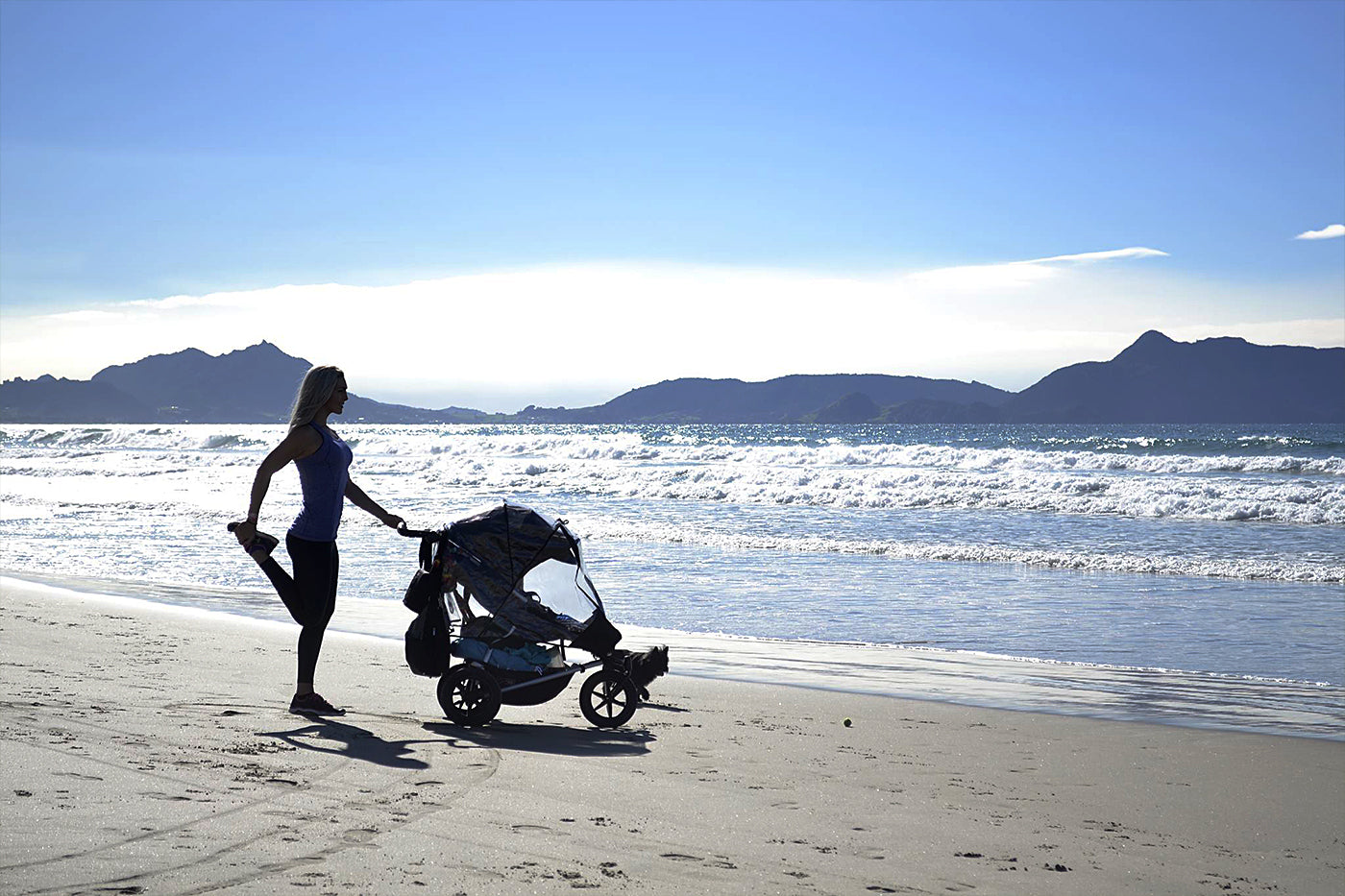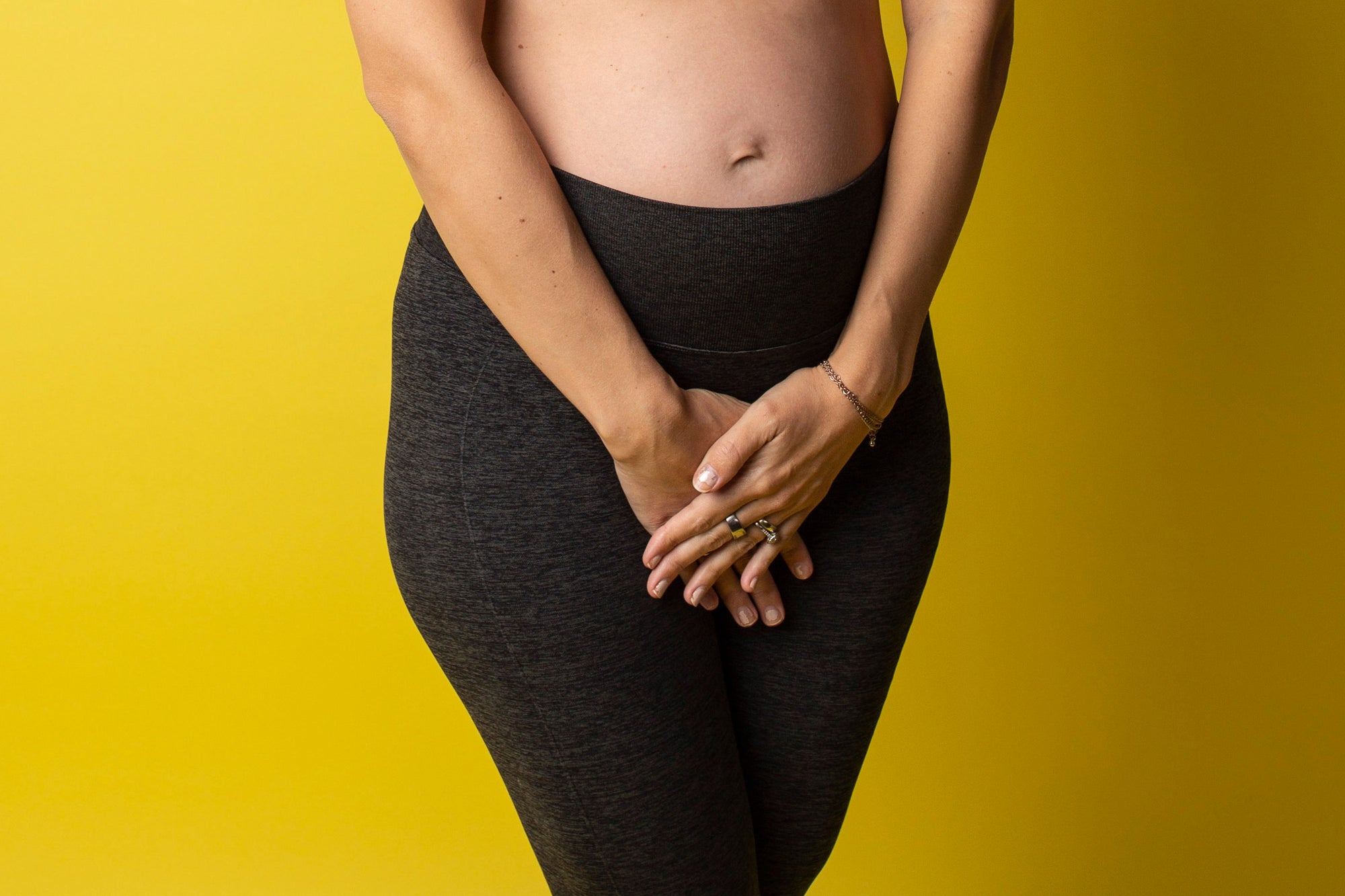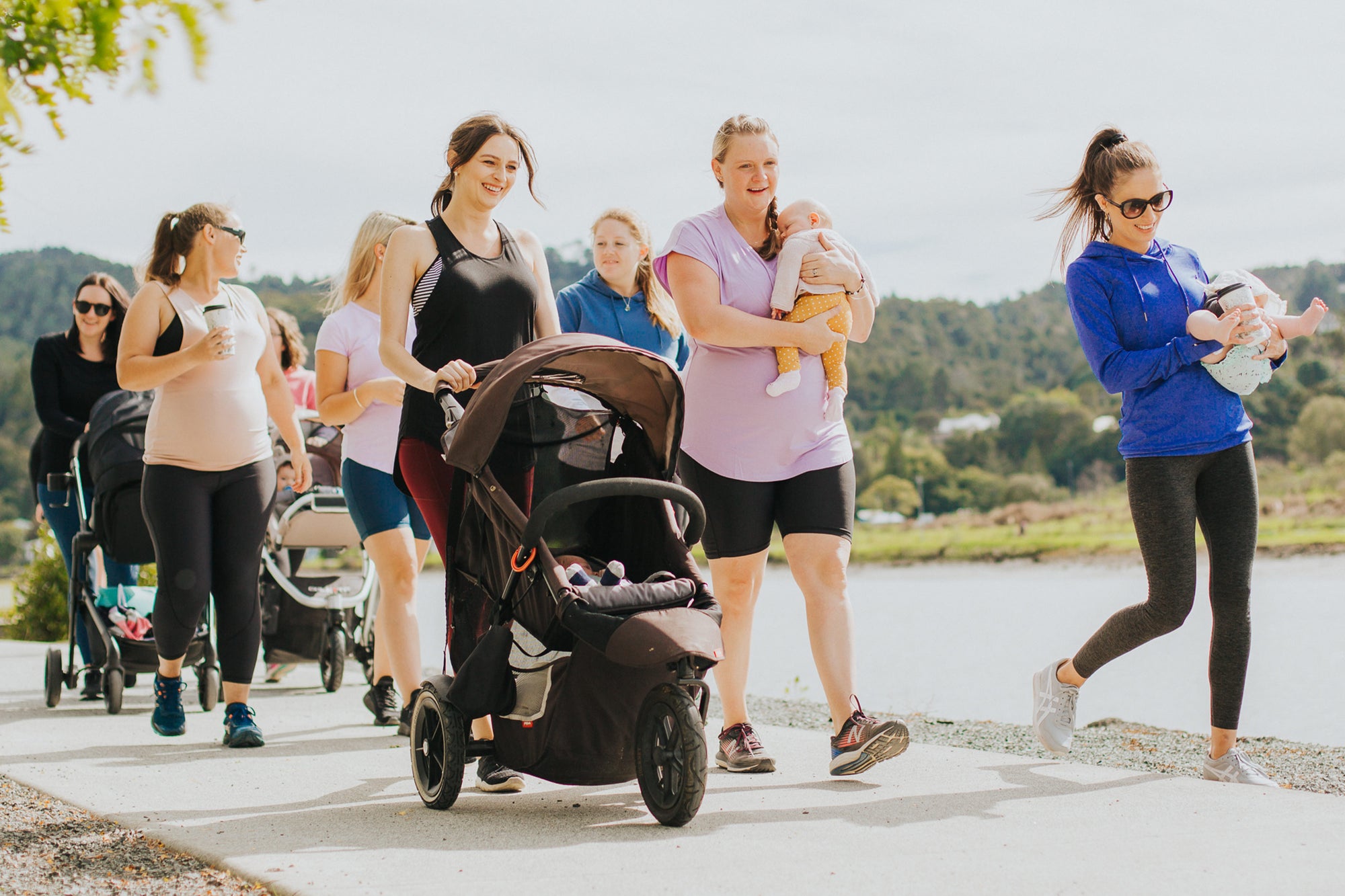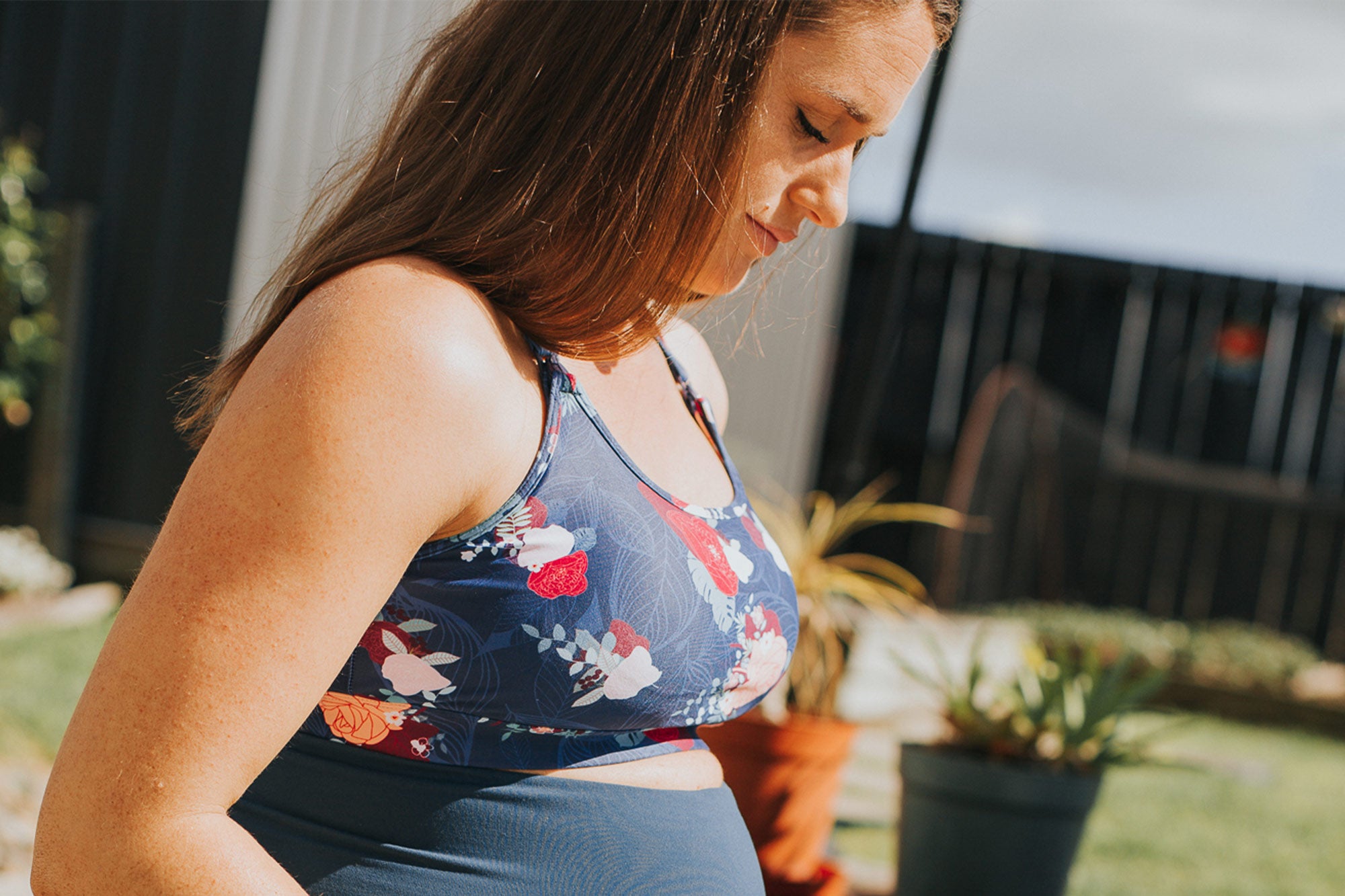Ahhhh incontinence…or perhaps you refer to it as, ‘oh no, I did wees in my pants again’ syndrome. As if pregnancy and birth wasn’t tough enough, lovely Mother Nature decided to truly test us with this one, thanks lady…real cool.
So what is incontinence, or ‘peeing oneself,’ exactly? Stress urinary incontinence (SUI) or light bladder leakage (LBL) is an involuntary loss of urine during physical exertion, coughing, sneezing or even laughing too hard. The condition is common with approximately 20% of women experiencing SUI/LBL, with a higher prevalence in pregnant, middle aged and older women. Risk factors include pregnancy, childbirth, being overweight, chronic coughing or nerve injuries to the lower back. Birth is very strenuous to the pelvic floor muscles. Which can result in weakness or even hypertonicity (increased tightness) and dysfunction of the pelvic floor musculature.
Dr. Caitlin Zietz is a healthcare practitioner with a primary focus on prenatal and postnatal care, she’s also a friend and supporter of Cadenshae and has medically endorsed all of our nursing sports bras and maternity leggings. Dr. Caitlin says preventing SUI or LBL depends on your pre-pregnancy symptoms and pelvic floor health.
“If you’re noticing stress incontinence post-baby, I suggest visiting a pelvic floor physiotherapist before returning to normal exercise. Sometimes the muscles are too weak, or even too tight. An assessment will determine the root cause and your physio will give you individualized exercises to try at home based on the findings. Some preventative measures include reducing high-impact exercise and proper breathing techniques to reduce stress on your pelvic floor.”
This brings me to our next expert and friend – Specialist Women’s Health Physiotherapist and founder of ‘The Glow Method at Home’ and ‘Mumma Physio’ – Joanna Perkins.
As well as being a highly qualified physiotherapist, Joanna is a mother of two and a keen runner. She has experienced SUI/LBL herself and as an expert, knows how to both prevent and manage the condition. Joanna says there’s a lot a woman can do before falling pregnant to try nip incontinence in the bud!
“The pelvic floor muscles are just like any other muscles in the body; they have a blood supply and can be strengthened. We need our pelvic floor to respond to larger increases in pressure - like when we cough, sneeze, lift something heavy, run, jump etc.
Prior to getting pregnant is a great time to get your core system working effectively, this involves recruiting your deep abdominal muscles and pelvic floor, getting your glute muscles strong to support you during pregnancy and learning how to breathe correctly. Having this awareness will help your body to remember what to do during pregnancy when there’s more demand on your core systems, as well as helping with a faster recovery.”
Excellent advice, but how many of us really prepare for such things, especially if we’ve never experienced any issues? Humans are often reactive rather than proactive when it comes to their physical and mental health, so what should a woman do if she is experiencing incontinence whilst pregnant, and has done nothing to strengthen her core muscles previously? Here’s Joanna’s take on this one.
“Around 75% of women experience incontinence during pregnancy. Many women are not doing as much exercise as usual so, naturally, the core muscles get weaker.
Pregnancy is also a great time to start your pelvic floor exercises and get connected with your core muscles. There are different cues that can be really helpful such as, “squeezing your back passage.” Imagine tightening a zip that runs from your tailbone to the front of your pelvis. The daily recommendations are: 10 sec holds x 10; followed by 10 quick on/off contractions. Aim to do these three times a day in different positions such as; lying, sitting, kneeling and standing. Then combine them with exercises like squats. Keeping mobile is important so pregnancy pilates or yoga can be really beneficial too.”
 Betsan and Joanna are wearing the 'Smoothie Crop Bra' in white and the 'Classic Maternity Leggings.'
Betsan and Joanna are wearing the 'Smoothie Crop Bra' in white and the 'Classic Maternity Leggings.'
I must’ve been one of the lucky ones, as I did not experience any form of leakage until I gave birth. Then it was all on! So what about women who haven’t done anything specifically tailored to strengthening the core and pelvic muscles before pregnancy or whilst pregnant? What can we do now the baby is here and our core is significantly damaged? Joanna has an answer for this one too!
“Incontinence is common postpartum, particularly in those early days. You should start doing your pelvic floor exercises straight away, with the same sets/reps suggested above. Start lying down, with less weight going through your healing tissues, then progress to more upright postures. This will help get your fundamental strength back. Re-establishing the connection can take a while, and you’ll have to work up to 10 second holds, but stick with it and you’ll soon start to feel your strength return. Everyone recovers at a different rate, keep that in mind. Also, you’re not exempt from incontinence if you had a caesarean, as your pelvic floor still had increasing pressures through it for nine months, as well as the trauma your abdominals experienced during the operation. When we exhale, our pelvic floor is naturally recruited, so try and do your contractions then, rather than holding your breath which can raise your intra abdominal pressure.

It’s also important to practise something called, “The Knack” which means pre contracting your pelvic floor prior to a sneeze or cough. This helps train the pelvic floor to respond automatically like it used to. Also, think about exhaling when you lift the buggy and car seat, recruiting your pelvic floor as well.
Wearing supportive activewear is extremely helpful when returning to exercise. The maternity leggings by Cadenshae support healing abdominals, allowing you to move comfortably and concentrate on strength work and core connection, rather than ill-fitting trousers. Cadenshae’s unique breastfeeding range allows mums to move more easily and conveniently. Putting on your exercise gear will make you more inclined and motivated to do your workout, which will assist in your incontinence. For these reasons it’s absolutely worth investing in specialist wear, like Cadenshae.”
Incontinence can be treated, but will take varying amounts of time depending on your delivery, postnatal complications and your core connection, but be patient. It’s worth getting a women's health physiotherapy assessment, particularly if things don't improve, you don't feel you’re getting a connection, or you have ongoing pelvic pain or pelvic heaviness. Many women who experience incontinence issues after they have a baby keep it quiet because they’re embarrassed and simply “put up” with symptoms that many deem as normal post baby. Although the condition is common, it certainly isn’t something we should accept as normal. It’s important we remove the stigma of incontinence and encourage women to prioritise their own recovery, like they would from any other injury or operation.
Another point worth mentioning is that a lot of women who experience SUI or LBL do not use the correct protection against it. Often women are using their usual sanitary pads instead of specially designed incontinence pads, however this is not recommended for three main reasons:
- Absorbency. Incontinence pads are designed to hold much more fluid than menstrual pads. Sanitary pads cannot absorb as much, meaning if you use those, you’ll leak far more often.
- Odour Control. Bladder control pads are made with a wicking fabric that draw moisture away from the skin and eliminates odour. Some also contain special gels that change the urine into a more solid substance, which also helps with odour control. Sanitary pads do not work in this way and odours are harder to control.
- Skin Protection. The same wicking fabric and gel that help control odour also help to protect a woman’s skin. Incontinence pads neutralize acidic urine, which can cause skin rashes if left unchanged.
At Cadenshae, we recommend Poise LBL and incontinence pads for women experiencing leakage problems. Aussies reading this can get themselves a free sample kit to try! Thanks ‘Poise!’
Incontinence! It’s nothing to be afraid of now you have the answers and solutions moving forward. At Cadenshae we’re well aware baby-making isn’t always sunshine and lollipops. There can be a fair bit of rain too (see what I did there?)! We like to keep it real, so hopefully this article has helped you if you’re struggling with this annoying and embarrassing issue.
I remember going to one of my first CrossFit classes about eight months after my second son was born. I was doing a clean and jerk, or a power clean or something (I don’t know, one of them, I’m no pro)! Anyway, I did my set and actually managed some relatively heavy weights. The trainer came over to me and said, ‘that’s pretty heavy for a first timer, you must be so proud of yourself!’ I said, ‘Mate, I couldn’t care less about how heavy it is, I’m just stoked I didn’t pee myself!”
Poor guy…he never really engaged in one-on-one conversation with me after that!
Written by Ellen Chisholm in conjunction with Dr. Caitlin Zietz and Joanna Perkins.



